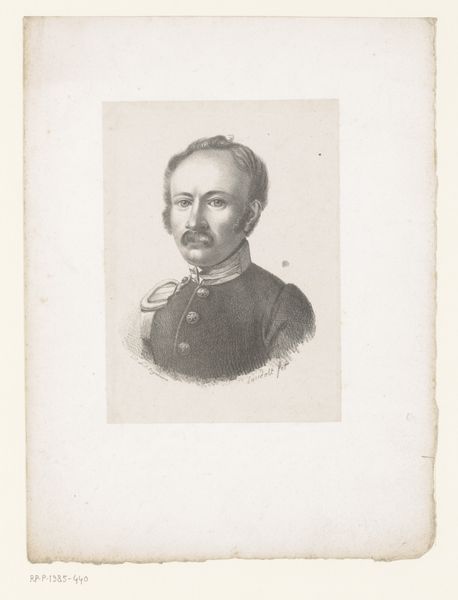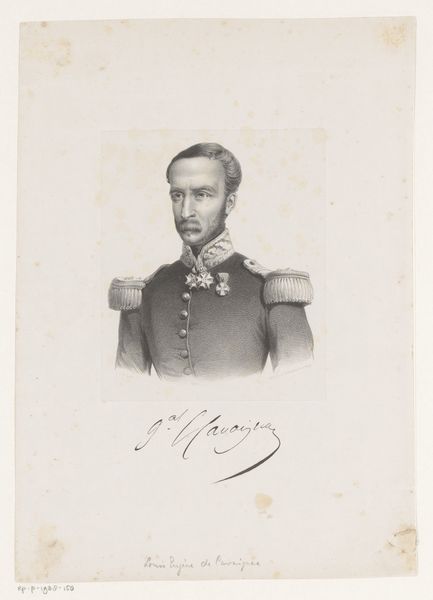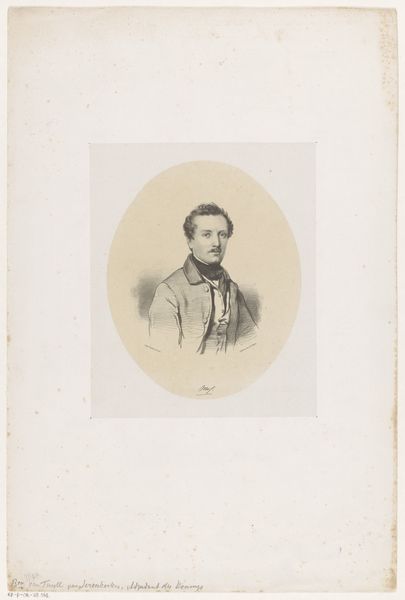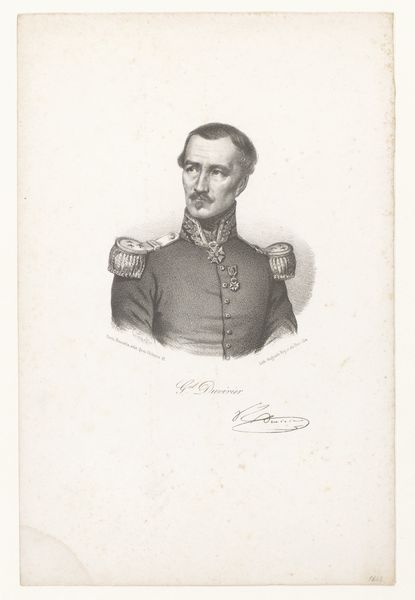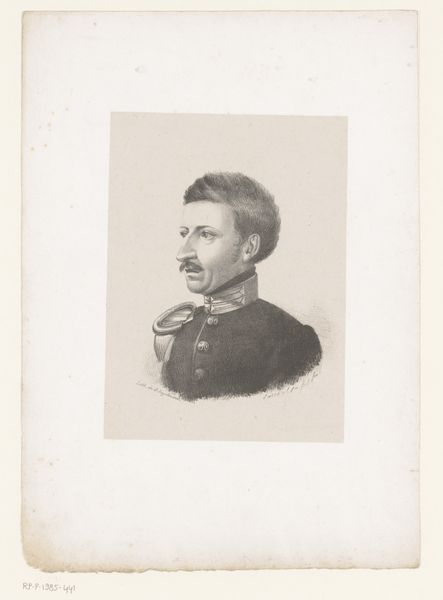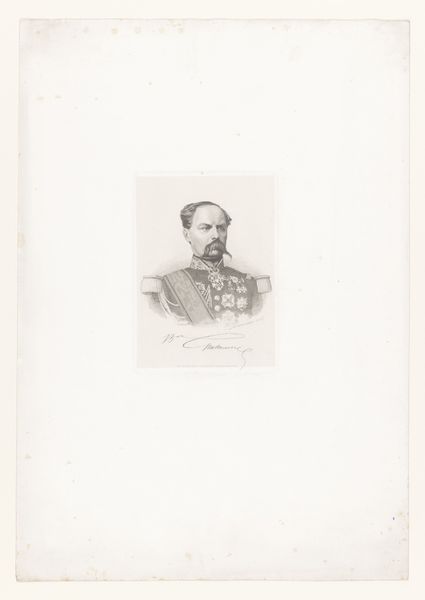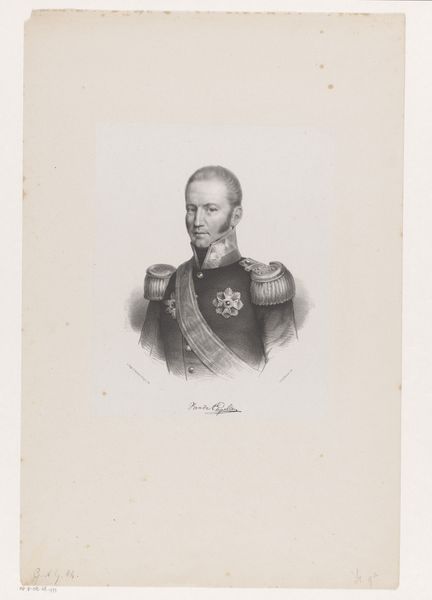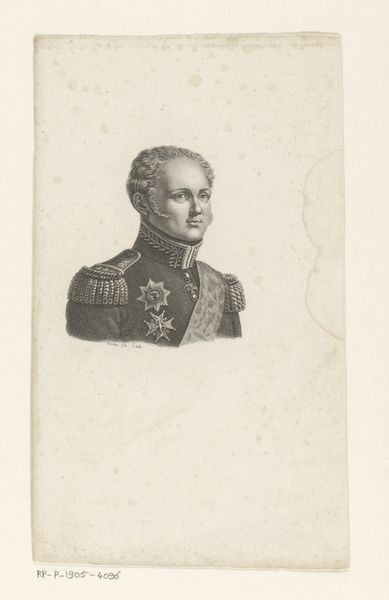
drawing, print, paper, ink, graphite
#
portrait
#
pencil drawn
#
drawing
#
neoclacissism
#
ink paper printed
# print
#
paper
#
ink
#
graphite
#
portrait drawing
#
academic-art
Dimensions: height 299 mm, width 217 mm
Copyright: Rijks Museum: Open Domain
Curator: Looking at this artwork, I’m immediately struck by the sitter’s unwavering gaze and somewhat melancholy affect. Editor: Indeed. This is a piece titled "Portret van een onbekende militair," or "Portrait of an Unknown Soldier." It's attributed to M. Landolt, made between 1816 and 1839, during a period rife with socio-political upheaval after the Napoleonic Wars. Curator: The details in his military attire convey such seriousness, and perhaps speak to shifting social constructs that reify codes of conduct after years of conflict. But is this also a meditation on masculinity? His face is so somber and yet he gazes directly at us. Editor: Technically, the portrait showcases a mastery of the Neoclassical style in drawing and printmaking. Consider the incisive use of graphite and ink to define his facial structure. There's also a profound use of shading, giving a palpable sense of three-dimensionality to the subject on what is ultimately just a flat surface. Curator: This somber affect seems deliberate. Perhaps a critique of militarism, showing its psychological toll, in those post-Napoleonic days of revolution when liberalism sought ways to assert a humanistic sensibility beyond tradition. Is he also staring down the rise of militarism on the horizon? Editor: You’re taking a distinctly interpretative approach. Perhaps a semiotic analysis could clarify, looking at the codes embedded within military attire. Each button, each epaulette serves as a signifier of rank, power, and social standing within a militarized hierarchy. These codes are deeply formalized, acting as clear status statements, further emphasizing his class. Curator: And doesn't the very 'unknown' status add a layer of intersectional nuance to it? It speaks to the soldiers whose identities get lost within grand historical narratives. How do those anonymous stories inform historical turning points or political shifts? Editor: The mystery certainly adds depth. Well, by engaging with both structure and subtext, we can hopefully stimulate audiences' thinking and understanding about art and identity! Curator: Absolutely, from the technical brilliance to its broader context. What an insightful journey.
Comments
No comments
Be the first to comment and join the conversation on the ultimate creative platform.
